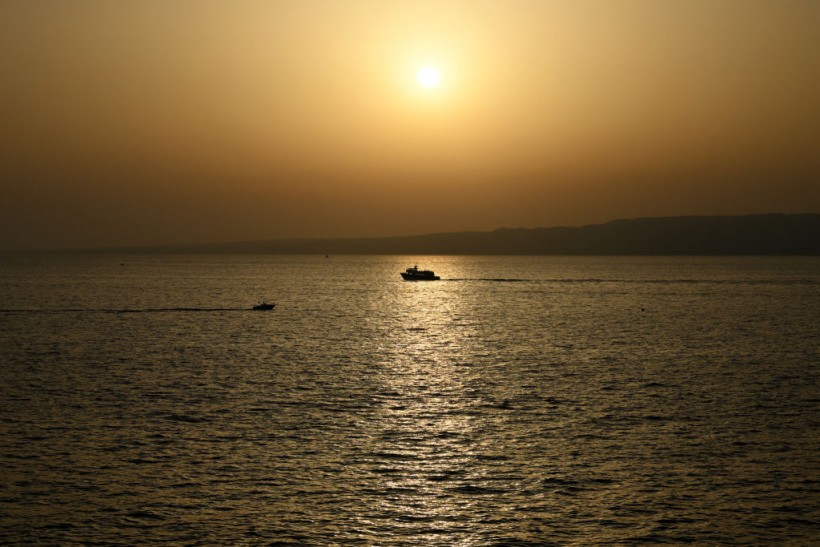The world is facing a climate crisis as human activities are increasing the greenhouse gas emissions and changing the natural balance of the Earth system.
One of the major drivers of the climate change is the deforestation, which is the conversion of forest land to other uses, such as agriculture, urbanization, or mining.
Deforestation not only reduces the carbon storage and the biodiversity of the forests, but also affects the regional and the global climate by altering the energy and the water cycles.
The Maritime Continent and its Role in ENSO
 (Photo : NICOLAS TUCAT/AFP via Getty Images)
(Photo : NICOLAS TUCAT/AFP via Getty Images)

The Maritime Continent (MC) is the region between the Indian and Pacific Oceans that includes the archipelagos of Indonesia, Borneo, New Guinea, the Philippine Islands, and the Malay Peninsula.
It is home to some of the world's most diverse and rich ecosystems, as well as millions of people who depend on them for their livelihoods.
However, the MC is also one of the most deforested areas in the world, due to logging, agriculture, mining, and urbanization.
According to a recent study, the MC has lost about 40% of its forest cover since 1900 and is projected to lose another 15% by 2100.
The MC is not only important for its biodiversity and human well-being but also its influence on the global climate.
The MC is a key component of the El Niño-Southern Oscillation (ENSO), a climate phenomenon that occurs every two to seven years in the tropical Pacific Ocean, associated with changes in air pressure from east to west.
ENSO affects the weather patterns, rainfall, temperature, and ocean currents of many regions around the world, such as South America, Australia, Africa, and Asia.
ENSO has two phases: El Niño and La Niña.
During El Niño events, the trade winds that blow westward across the Pacific weaken, causing warm water to pile up in the eastern Pacific, and reducing the upwelling of cold, nutrient-rich water.
This leads to droughts in Australia and Indonesia, floods in South America, and warmer temperatures globally.
During La Niña events, the opposite happens: the trade winds strengthen, pushing warm water to the western Pacific, and increasing the upwelling of cold water.
This results in wetter conditions in Australia and Indonesia, dryness in South America, and cooler temperatures globally.
The MC plays a crucial role in ENSO by modulating the heat and moisture exchange between the land and the ocean, as well as the atmospheric circulation over the tropical Pacific.
The area acts as a heat source for the atmosphere, as the forests and wetlands release large amounts of water vapor through evapotranspiration.
This water vapor then rises and forms clouds, which reflect sunlight and cool the surface. The clouds also produce rainfall, which replenishes the soil moisture and sustains the vegetation.
Furthermore, the MC also acts as a heat sink for the ocean, as the rainfall and runoff from the land lower the sea surface temperature and salinity.
Thus, it helps to maintain the temperature gradient between the eastern and western Pacific, which drives the trade winds and the ENSO cycle.
Also Read: Deforestation is the Culprit for Increased Storm Frequency and Worsening Floods
The Impact of Deforestation on ENSO
However, deforestation in the MC disrupts this delicate balance between the land, the ocean, and the atmosphere.
By removing the trees and replacing them with grasses or crops, deforestation reduces evapotranspiration and increases the surface albedo (the amount of sunlight reflected by the surface).
This means that less water vapor is released into the atmosphere, and more solar radiation is absorbed by the land, warming the local environment and creates a high-pressure system over the MC, which suppresses cloud formation and rainfall.
This in turn reduces the soil moisture and the runoff to the ocean, which raises the sea surface temperature and salinity.
This makes the MC a heat source for both the atmosphere and the ocean and weakens the temperature gradient between the eastern and western Pacific, affecting the trade winds and the ENSO cycle, making it more unpredictable and complex.
A new research paper published in Geophysical Research Letters suggested that deforestation in the MC can strengthen ENSO, resulting in an increased frequency of events and a shift towards the central Pacific.
The researchers used a computer model to simulate the effects of deforestation over 100 years, changing the native broadleaf evergreen and deciduous trees to C4 grasses.
They found that deforestation in the MC can alter the seasonal patterns of the sea surface temperature and the atmospheric pressure in the Pacific, which can trigger or enhance ENSO events.
They also found that deforestation in the MC can change the location and intensity of ENSO events, making them more likely to occur in the central Pacific rather than the eastern Pacific.
This can have different impacts on the global climate, such as changing the rainfall distribution and the teleconnection patterns (the linkages between distant regions through atmospheric or oceanic circulation).
The researchers suggested that deforestation in the MC can affect ENSO through two mechanisms: the seasonal footprinting mechanism and the Rossby wave train.
The seasonal footprinting mechanism is a process by which the sea surface temperature anomalies in the mid-latitudes in winter can affect the subtropical atmosphere in the following spring and summer.
Meanwhile, the Rossby wave train is a process by which the atmospheric pressure anomalies in the tropics can propagate poleward and eastward as waves, affecting the climate of distant regions.
The researchers explained that deforestation in the MC can create a positive feedback loop between these two mechanisms, amplifying the ENSO variability and complexity.
Related article: Main Threats of Deforestation
© 2024 NatureWorldNews.com All rights reserved. Do not reproduce without permission.




![Roundworms with Short Memories 'Stop Forgetting' When Frozen or Given Lithium [Study]](https://1471793142.rsc.cdn77.org/data/thumbs/full/70295/280/157/50/40/roundworms-with-short-memories-stop-forgetting-when-frozen-or-given-lithium-study.jpg)
